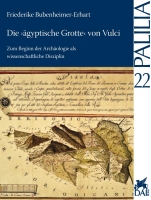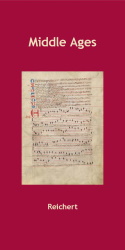Short Description
The Egyptian grotto, as the Isis-Tomb of Vulci was called when it was discovered in the nineteenth century, is one of the most prominent tombs of the orientalising period in Etruria. Friederike Bubenheimer-Erhart presents in this volume many important documents of the time, on the basis of which she undertakes a fundamental reconstruction of this Etruscan sepulchre. She also addresses a number of aspects, which characterise the beginning of archaeology as an academic discipline, and she explains the special relevance of Egyptian artefacts found in the soil of ancient Etruria for the contemporary history of the Papal States.
Description
Etruscan tombs yielding Egyptian or Egyptian-like objects were known in the nineteenth century as Egyptian grottos. The most Egyptian-like of these grottos, the Isis-Tomb of Vulci, is the subject of this book. Unearthed in 1839 during the excavations of the Princes of Canino it was a spectacular discovery then. While the structure itself was soon afterwards lost, the finds have remained a cornerstone for the definition of the orientalising period in Etruria until the present day. These finds, widely known throughout the scholarly world and always referred to in the standard literature on Etruscan art and archaeology, were not published by the excavators, Lucien and Alexandrine Bonaparte. For this reason and because of the fact that they passed through several hands before they finally reached the British Museum in 1850, doubts as to their authenticity have surrounded the Isis-Tomb of Vulci ever since. In an attempt to provide a firm starting point for an in-depth study of this tomb, the author presents plenty of documents collected from several historical archives. On the basis of these documents, among which are excavation reports, minutes of meetings, sporadic notes on finds, account statements and personal correspondence, she captivatingly tells the story of the tomb from the moment of its discovery through to the time when the bulk of the finds entered the British Museum. She then reconstructs, as far as the documents still allow, the original tomb-group, which turns out to be larger than the group preserved in the British Museum. Thus for the first time a clear picture of this most important Etruscan tomb emerges, closing a serious gap in general knowledge. The story of this Egyptian grotto also touches upon the history of archaeology, as it was practised under a combination of circumstances determined by certain institutions, legislature and initiatives during the second quarter of the nineteenth century in the Papal States and by and by developed into an academic discipline. The author explains the general attitude towards archaeological finds, which were likewise of scholarly, commercial and political interest. Egyptian and Egyptian-like objects from tombs of the orientalising period received special attention, because they connected Etruria with the antique civilization of Egypt, which still dominated thinking. Since some of the persons concerned with the Isis-Tomb of Vulci were leading figures in politics and society, this volume also provides a fascinating glimpse on the historical situation in Italy during the time of the Restauration.
Biographical Note
Friederike Bubenheimer-Erhart studied Classical Archaeology, Egyptology and Art History at the University of Heidelberg as well as the Universities of Regensburg, London, Basel and Vienna. In 2002 she received her PhD from the University of Heidelberg based upon an interdisciplinary dissertation on the Isis-Tomb of Vulci with highest honours. Between 2003 and 2005 she was Research Associate to the Chair of Classical Archaeology at the University of Erlangen-Nürnberg and collaborated in a Research Project on the Royal Necropolis of Tamassos on Cyprus. Since 2006 she is Research Associate to the Department of Egyptology at the University of Vienna and Principal Investigator of an interdisciplinary Research Project on Egyptian ritual vessels and their adoption in Etruria. Since 2007 she also teaches Classical Archaeology at the University of Vienna. Her research encompasses the art and archaeology of the Etruscans, Egyptian ceramics of the Third Intermediate and Late Periods, the archaeology of Greece and Cyprus in archaic and classical times, cultural contacts and change in the Mediterranean and the history of archaeology.
Series Description
With PALILIA, the German Archaeological Institute of Rome introduces a new series of publications, primarily monographs on archaeological research done in or starting from Italy. The series will deal with new approaches and innovative research methods, and subjects neglected in classical archaeology. The subject range includes central archaeological research areas, such as Graeco-Roman sculpture, iconography, architecture, urban research, and topographic studies, as well as topics from social and economic history, history of religion and of everyday life.




 Preface
Preface

 Neuerscheinungen 2023/2024
Neuerscheinungen 2023/2024
 Gesamtverzeichnis 2023/2024
Gesamtverzeichnis 2023/2024
 Katalog Oriental Studies & Linguistics
Katalog Oriental Studies & Linguistics
 Mittelalter
Mittelalter
 Deutsche Inschriften
Deutsche Inschriften
 Musiktherapie
Musiktherapie
 Literaturen im Kontext
Literaturen im Kontext